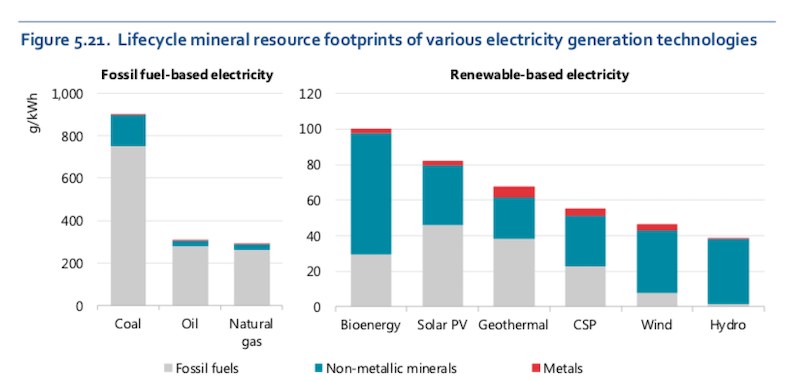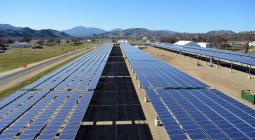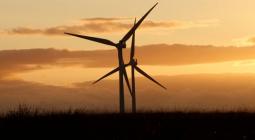Renewables use only fraction of minerals used for fossil fuel generation.
Renewable energy generation technology uses just a fraction of the minerals used for fossil fuel power generation – and particularly for coal power – a new report from the International Energy Agency has shown.
The research finds that while metals and other minerals are essential to the production of renewable power equipment and infrastructure, they represent only a small share of the current mineral footprint of the global renewable electricity sector.
This finding – illustrated in the chart below – counters claims that demand for minerals to supply the global renewable energy boom is undermining the benefits of the zero emissions generation technologies.

Global studies, including a recent report from Australia’s Institute of Sustainable Futures at the University of Technology Sydney, have warned of skyrocketing demand for metals such as copper, lithium and cobalt as countries around reach for 100 per cent renewables, and the fallout this could have.
But the IEA report finds that the current state of play finds fossil fuel generation still using far more of these mineral resources globally than renewables like solar and wind.
“Although renewable electricity technologies generate much lower CO2 emissions than fossil fuel power plants, their large-scale deployment has raised concerns about higher mineral requirements and related environmental and social impacts,” it notes.
The report shows that most of the material footprint of renewable technologies is made up of non-metallic minerals – such as aggregates, gravel, calcite, clays, shale and gypsum – and raw fossil fuels extracted for infrastructure construction.
The report finds that metals so far represent only a small share – less than 3 per cent – of the current mineral footprint of the global renewable electricity sector, but they are nonetheless essential for the production of renewable power equipment and infrastructures.
Iron is by far the most-used metal for renewable power, accounting for almost 85 per cent (120 Mt) of the sector’s cumulative metal footprint over 2013-18, of which two-thirds was used for steel in hydro and wind power plants together.
Aluminium (5%) and copper (4%) are the second and third most mobilised metals, mainly for PV panel manufacturing.
The remaining fraction of the metal footprint includes metals with relatively lower production levels – some mined as principal substances including nickel, zinc, lead, tin and titanium; others recovered as by- or co-products of the former, like germanium, gallium, indium, hafnium, tellurium, bismuth and others.
Of course, this footprint will “increase substantially” as the renewable electricity sector continues to grow over the outlook period, driven primarily by growth in solar PV and wind capacities, and will need to be monitored in terms of sustainability.
And while the geological availability of mineral resources is not expected to impede deployment of renewable technologies in the near future, the report says, tensions in supply chains and price volatility may occur over the longer term.
This will depend on “substitution opportunities, the evolution of demand for competing applications (e.g. batteries, electronics and electric appliances), geopolitical events, and environmental, social and trade regulations among other factors.”
21 October 2019
RENEW ECONOMY




